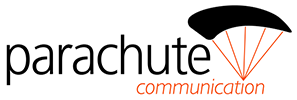Your business won’t make a success of digital marketing until you get your head round content. Not any old generic content – content that’s specific to you and your world. I would say this because I’m a copywriter (‘content provider’ in digital speak). But hear me out.
Here are four digital marketing scenarios I come across all the time.
- The blog that’s difficult to write and never seems to get read.
- The social media that rarely attracts a new customer yet hoovers up an enormous amount of resource.
- The new website that ranks poorly and doesn’t generate any / enough quality leads.
- The Google Adwords campaign that isn’t paying for itself.
Trust me, content will be the root of the problem because what you say (words and keywords) and show (still and moving images) are how people find you, and then helps them decide whether to buy from you.
Take content seriously – it’s one of the biggest tools you have to help differentiate your brand and manage the way you communicate.
Digital marketing is different
Marketing is different today because it’s predominantly digital which offers many, many more opportunities to reach customers and influencers. The choice of channel and platform, and their ability to interconnect is empowering. While the immediacy and interaction creates the greatest opportunity for businesses to target people and convert them into customers.
That’s when digital also becomes a bit of an octopus – there’s a lot to think about and manage. It can quickly overwhelm and become a very frustrating waste of money. So much technology to help – and bewilder. So many wonderful opportunities – and expensive, time-wasting dead ends.
The key to a more successful digital experience starts with content. After all, digital is just a series of channels – in pre-digital days it was pretty much limited to brochures, leaflets and magazine ads. The strength of any channel lies in how you use it to your advantage and with your content.
Take keywords, for example. As algorithms develop so the value of the keyword increases. They connect you to your ideal customers because they’re words you both have in common. Ignore keywords or use the wrong ones, however, and it’ll become increasing difficult to connect with the right people.
So, the better you know your customers, the more successful you’ll be in selecting the right keywords.
Good content hinges on a deep understanding of your audience and where your brand fits in their world. That’s not just a digital trend – it’s always been an important part of the marketing mix. Digital means you can’t shy away from it any more – there’s no where to hide.
Back to basics – even for digital marketing
Digital is different but guess what will help you make a better job of it? Going back to basics: being clear about your brand (what you do, how and why) and knowing your customers inside out.
Consider the structure upon which your marketing is built – the 4Ps of Product, Place, Price and Promotion as it used to be called. Businesses are now encouraged to focus on the 4Es (Experience, Everyplace, Exchange and Evangelism). I prefer the 4Ps because there’s no doubt what you have to do. They represent a structure for putting the right product (or service) in the right place at the right price at the right time. The implication being that you’ve established your brand and know who you’re targeting. That still seems pretty relevant to me.
And that’s the starting point for your content – what your business is about (Brand) and for whom (Audience). Your Brand is how you do what you do and why so it’s crystal clear to someone that you’re a good fit so they’ve no need to look elsewhere. Audience is the wider group of people who influence your customers – employees, suppliers, family, friends, celebrities, academics, industry sectors, etc, etc. Customers are the ultimate target of course, but getting to them through others is sometimes even more effective.
Know your brand and your audience and you know what to communicate – the topics and tone you need to focus on in your content. And what to ignore.
Understanding your audience also gives you an appreciation of how to reach them. What kind of website, which social media platforms – which off-line activities? Get content right and other stuff falls into place – trust me, I’m a copywriter.
Curate or deflate?
Curate. A word that used to be confined to the world of galleries and museums. But it’s relevant to content as it means to select, organise and look after. Digital gives you the ability to communicate with people immediately and in different ways so you need to be selective in what you present to them. Get to the point and keep to the point.
So here’s the thing: you get a cold call / unsolicited email / boosted post / pushy LinkedIn invite to connect. Question: Why does this (usually) make you cross? Answer: Probably because they’ve interrupted your day with inconsequential sales speak and boring generic content.
What if they’d provided proof that they understand you and know what you want (maybe before you do), that they can solve some specific problems and challenges, or simply enhance your life? You still might not respond but I bet the next time they appear on the horizon, you’ll be a bit more curious.
Building relationships – that’s how it works. And that’s what you build a content strategy round. Otherwise ‘curation’, with its emphasis upon care and careful selection, really is an inappropriate word.
So the question is: do you curate or deflate?
Content curated just for your audience
The basis of good content is engaging people with tales of what you do and how, and why you are relevant to them. It means knowing your business as a brand, and understanding your wider audience. Then you can create content that conveys what you do, and how it’s relevant to people’s specific situation. Content that rings true and makes sense all the time. Relating instead of selling. Being technical, alarming, informative, educational, reassuring – all those things. Just make it relevant to the reader – always. Just don’t let the bright lights of digital marketing blind you to communicating effectively.
Creating the right content calls for creativity, investigation and diligence. This is true for online, print, face-to-face – across all your points of contact, explain what you do and be consistent. You may feel you offer the same thing as another business – even more reason to customise your content. In reality you do things differently – exceptionally well or just right for certain people. That’s what you talk about. Your brand and why you know it’s right for them.
Create an authentic brand and tell people why you matter, why they should take notice. If you reflect personality and capability, and it finds its way to your particular receptive audience then you have the golden opportunity of encouraging them to take action.
Businesses spend vast amounts of money and time on creating websites and setting up social media platforms. Sadly, what’s communicated – the content – is often an afterthought.
Content should never be an seen as separate from your business and certainly not afterthought.
Your content is integral to your business success
Digital marketing is changing all the time but one thing remains true: relevant and dynamic content is integral to the success of your business.
Generic content is a communication killer – it just isn’t good enough. Content should be personal to your audience. You’ll only achieve this if you make content part of your day job not something you do grudgingly and reluctantly.
People are out there searching for a brand like yours – if only you could attract their attention.
(Thanks and credit to Pablo for the image)

